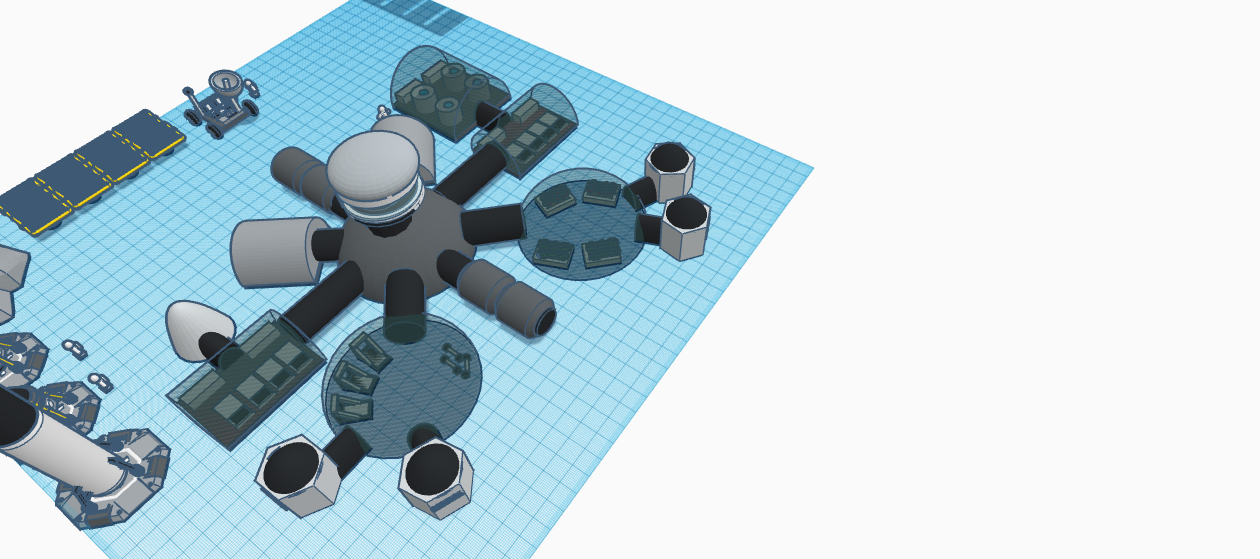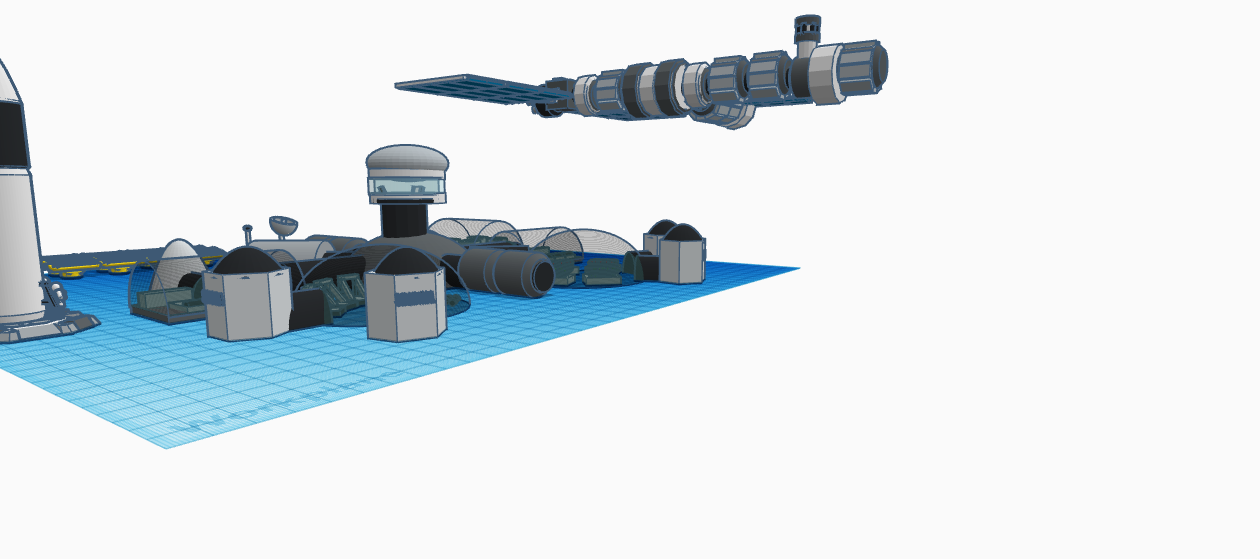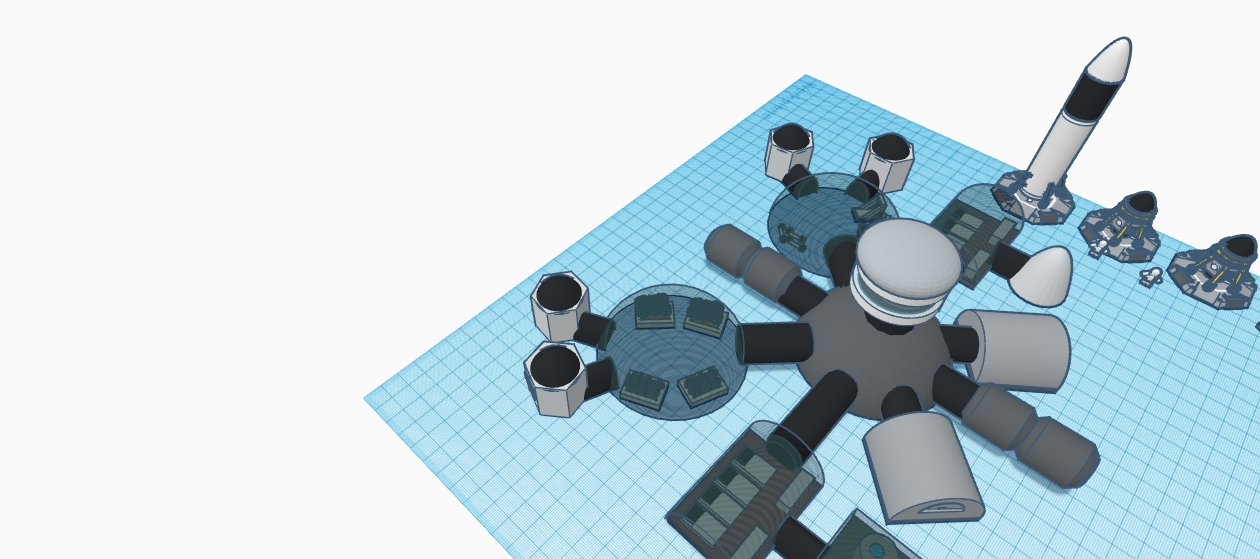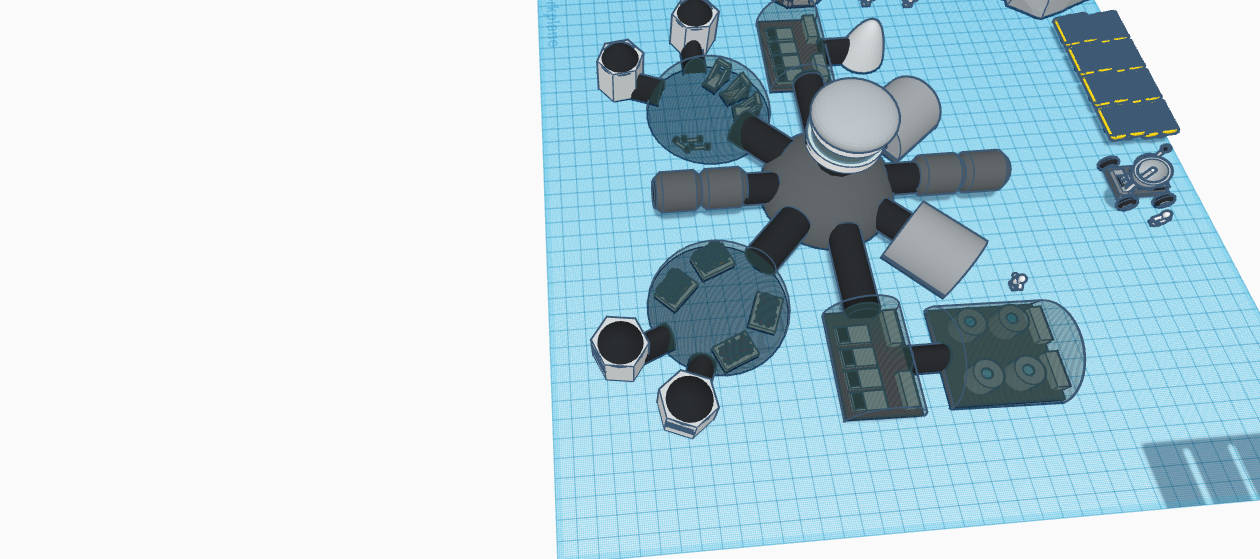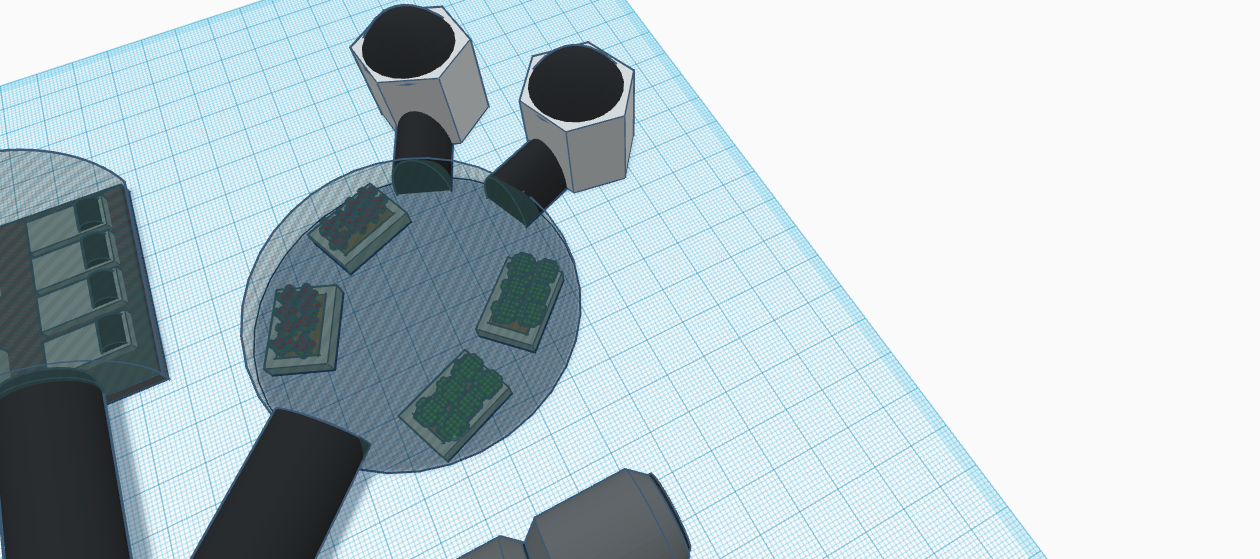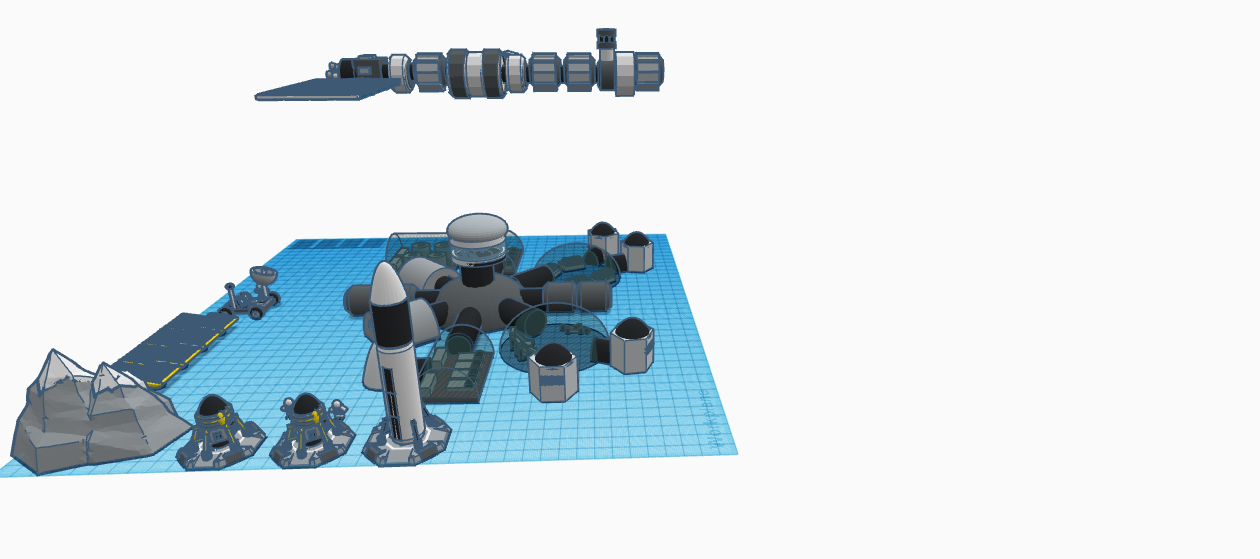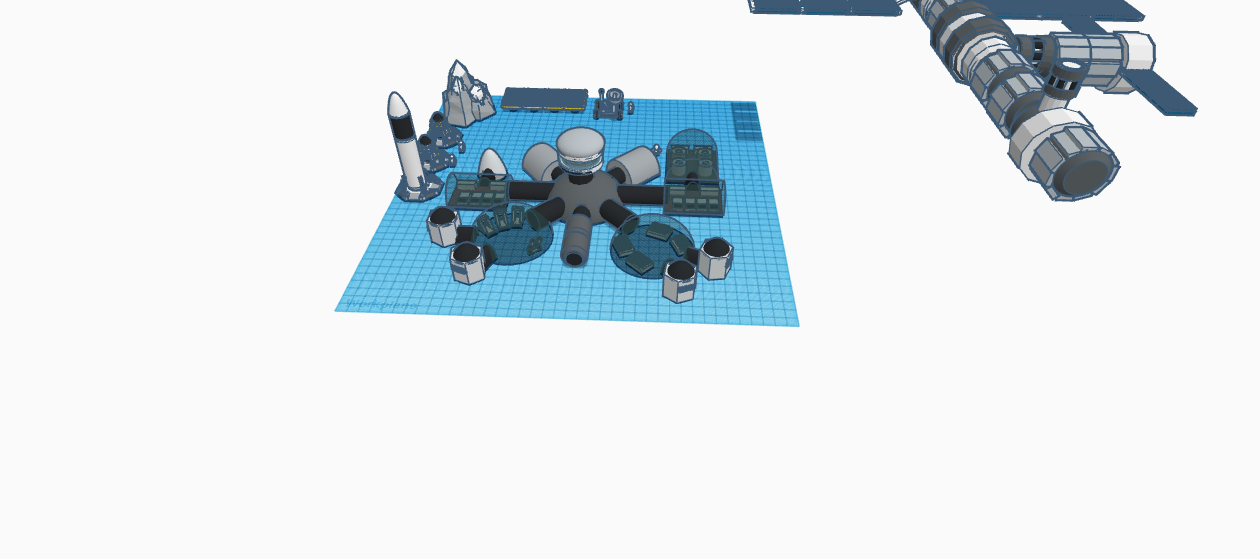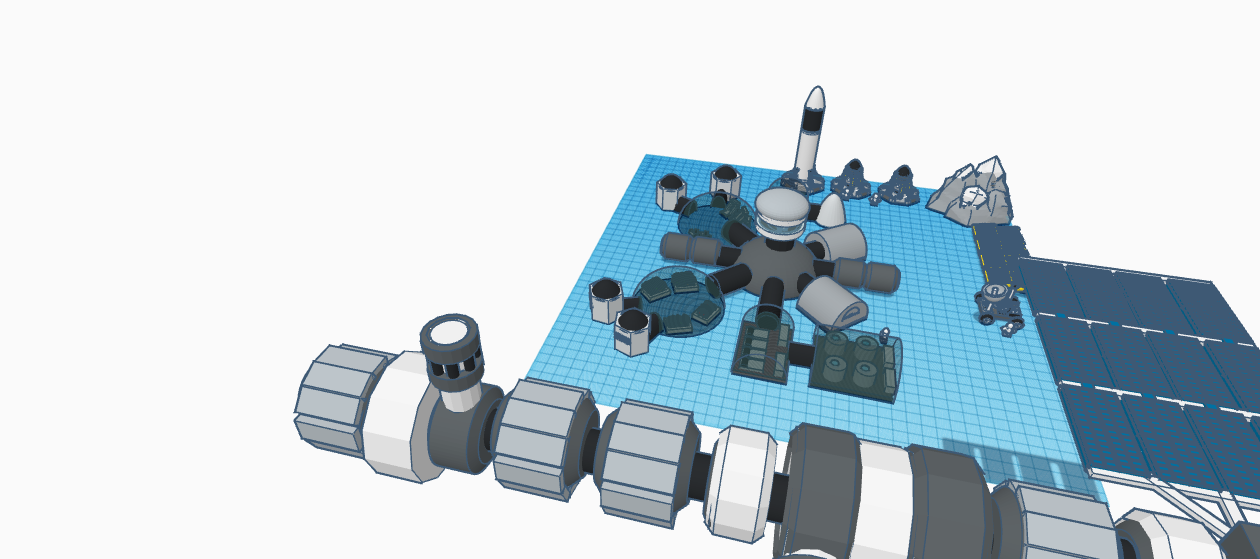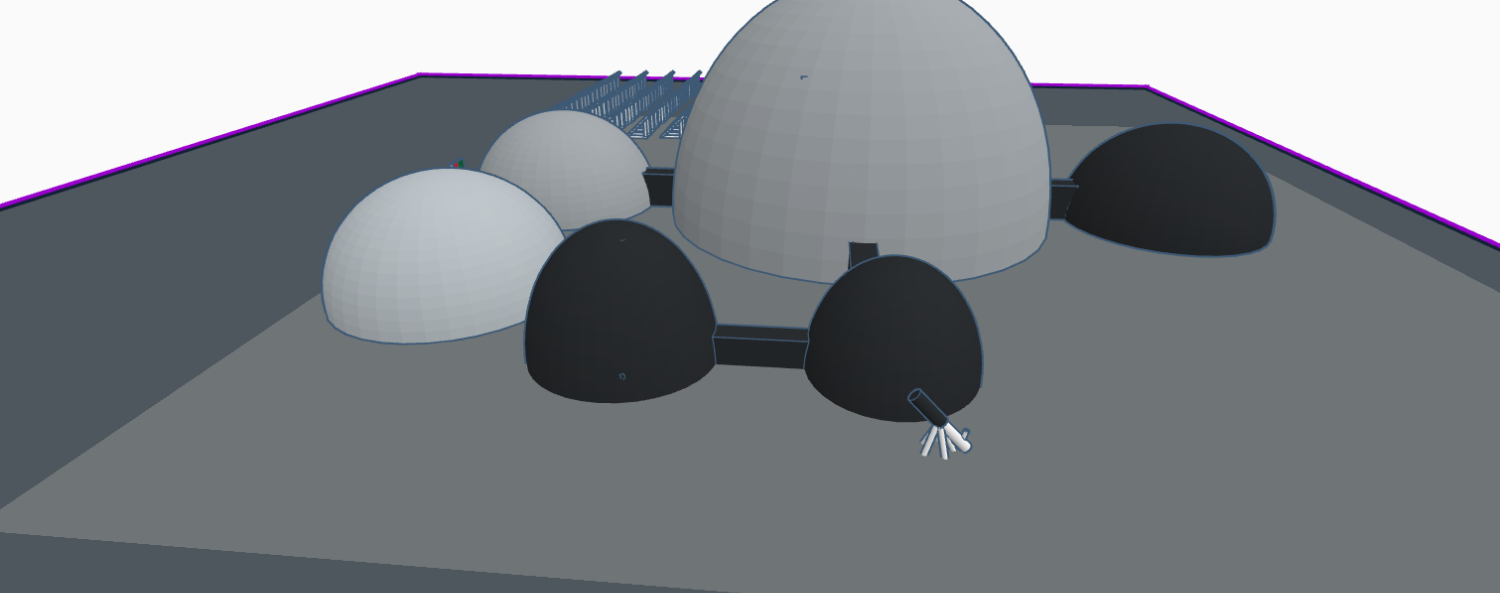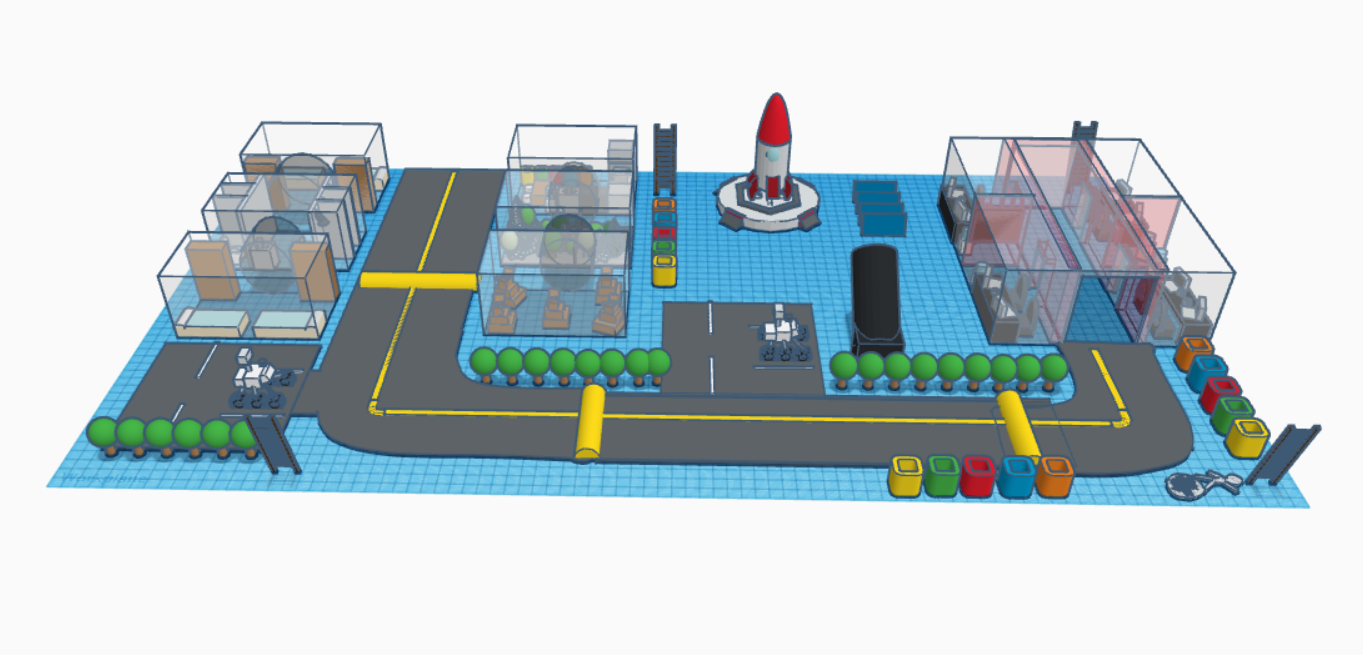Moon Camp Explorers Gallery 2021-2022
In Moon Camp Explorers each team’s mission is to 3D design a complete Moon Camp using Tinkercad. They also have to explain how they will use local resources, protect astronauts from the dangerous of space and describe the living and working facilities.
Team: team I
European School Brussels III Brussels Belgium 13 2 / 0
External link for 3d
|
Project description
Our Moon Camp project, that we created using Tinkercad, includes a Moon Base, a Lunar Lander, the Lunar Orbital Space Station, a Lunar Rover, a Rocket, a Space Suit, protection from radiation and meteorites, energy production, the extraction and recycling of water, food production… Everything was designed to welcome two astronauts, who can do different experiments in the laboratory, grow plants in the greenhouse and explore the environment with the Lunar Rover. |
||||
|
Where do you want to build your Moon Camp?
Shackleton crater Why did you choose this location?
We would like to build our Moon Camp in Shackleton crater because we want it to be protected from weather conditions. Also, there are higher than normal amounts of hydrogen within the crater, which may indicate the presence of water ice we could use and analyze. Some sites along Shackleton’s rim receive almost constant illumination. At these locales sunlight is almost always available for conversion into electricity using solar panels! Moreover, the temperature at this site is also more favorable. How do you plan to build your Mooncamp? Which materials will you use?
Before we our two astronauts arrive on the Moon, robots would already be sent and would prepare the astronaut landing site. Then, 3D-printed structures could be formed from the lunar soil itself with the help of robots. Some materials our Moon Camp requires could be sent with the astronauts, but we could also mine and extract materials from the Moon for it. The buildings could be covered with the Moon’s sand to have more protection against Solar Radiation. |
||||
|
Water
|
Food
|
Electricity
|
Air
|
Protection
|
|
Water: Surface ice – in permanently shadowed craters – would be the readiest source of oxygen and hydrogen. Sunlight, channeled into the craters with mirrors, could heat the ice, and an overhead dome could capture water vapor. Rovers could also be equipped with ovens that would warm ice-filled soil to make water. |
Food: Most of the food would be frozen, refrigerated, or thermostabilized and will not require the addition of water before consumption. Many of the beverages will be in the dehydrated form. Food will be heated to serving temperature in a microwave/forced air convection oven. Our astronauts could also grow plants and vegetables in the greenhouse. |
Power: Most of the power would come from a solar panel field, facing horizontally, with a rotational capability to track the sun through 360°. |
Air: We could use light from high peaks and direct it towards the center of craters, where it would heat the ice and turn it into vapor. We could then split the vapor by solar electricity into hydrogen and oxygen. These gases could then be stored. |
Protection: Because the Moon has almost no protective atmosphere, astronauts would need shelter from cosmic rays, solar radiation, and meteorites. Inflatable or flat-packed living modules, brought from the Earth, could be covered with materials the Moon has such as sand or regolith. |
|
Describe a day on the Moon for one of your Moon Camp astronauts
I wake up around 6 am, when my crewmates are done guarding during the night to prevent a mechanical problem, fix them or even observe the stars. I then go eat a little snack and clean myself. I have many things to do during the day such as: water and take care of the plants in the greenhouse, go out and discover the environment, check if all devices for power, air and water are working well, do some exercise in the gym area, communicate with my team on earth and tell them who it is going on here, do some experiments in the laboratory, cook some food for lunch, clean the rooms… I also have to write a daily report about what I did today, how my health is and some other things. My day ends around 8 pm. Before I go to sleep, I take a shower. After my 14 hours day including 8 hours of working, it is time for my crewmates to take over. We change roles every 2 weeks. |
||||


